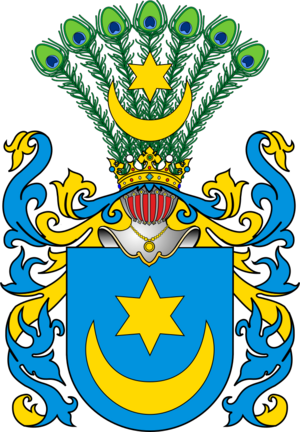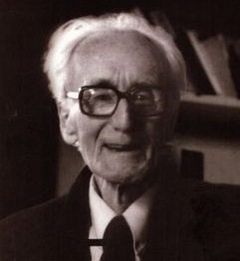Józef Czapski facts for kids
Quick facts for kids
Józef Czapski
|
|
|---|---|

Czapski in uniform, January 1943
|
|
| Born | 3 April 1896 Prague, Austria-Hungary
|
| Died | 12 January 1993 (aged 96) Maisons-Laffitte, France
|
| Nationality | Polish |
| Occupation | artist, writer, critic |
| Known for | co-creating Kultura monthly, survivorship and eyewitness testament of the Katyn massacre |
|
Notable work
|
The Inhuman Land, Lost Time: Lectures on Proust in a Soviet Prison Camp |
Józef Czapski (born April 3, 1896 – died January 12, 1993) was a Polish artist, writer, and art critic. He was also an officer in the Polish Army. As a painter, he was part of the Kapist art movement. This group was greatly inspired by the famous artist Cézanne.
After the Polish Defensive War in 1939, Soviet forces captured him. He was one of the very few officers who survived the terrible Katyn massacre of 1940. Later, after an agreement between Poland and the Soviet Union, he became an official envoy. His job was to search for missing Polish officers in Russia. After World War II, he lived in exile in France. There, he helped start Kultura monthly, a very important Polish cultural magazine.
Contents
Life Story
Early Years
Józef Czapski was born on April 3, 1896, in Prague. He came from a noble family. His sister, Maria Czapska, also became a writer. Józef spent most of his childhood at his family's home in Przyłuki, near Minsk.
In 1915, he finished school in St. Petersburg. He then joined the cadet corps, which is a military training group. Czapski studied law at the University of Saint Petersburg. In 1917, he joined a Polish cavalry unit. This unit was formed in Russia. He later left the unit. After the Russian Revolution of 1917, he moved to Poland. In 1918, he began studying art at the Academy of Fine Arts in Warsaw. However, in 1920, he left the academy. He volunteered to join the Polish Army.
Polish-Soviet War
Czapski believed strongly in pacifism, which means he was against war. He asked for a job in the army that did not involve fighting. His request was accepted. He was sent to Russia to find Polish officers who had been captured. These officers were from his old regiment. They were taken by the Bolsheviks during the Russian Civil War.
He traveled to St. Petersburg. There, he met several important writers and thinkers. His mission ended when he learned that the officers had been killed. After this, Czapski changed his mind about pacifism. When he returned to Poland, he joined the Polish Army. He fought as an armored train crew member during the Polish-Soviet War. For his bravery, he received the Virtuti Militari. This is Poland's highest military award.
Art and War
In 1921, Czapski continued his art studies. He went to the Academy of Fine Arts in Kraków. In 1924, he moved to Paris. There, he helped create the "Kapist" movement. This group focused on new ways of painting. Czapski started showing his art. He also began writing more, becoming a critic of art, books, and ideas. In Paris, he discovered the famous book In Search of Lost Time by Proust. He read it in French and wrote about it in Polish.
He returned to Poland in 1932. In 1939, he rejoined the army. He was captured by the Russians. He was held in prison and labor camps in the USSR. These camps were called Gulags. His love for Proust's book helped him survive. He would give lectures from memory to other prisoners. This gave him and others strength. He was one of only 395 people who avoided the fate of over 20,000 others. These people were murdered in the Katyn and similar massacres.
After the 1941 German invasion of Russia, Czapski joined the Polish II Corps. This group was led by General Anders. From 1941 to 1942, Czapski was given a special task. He had to investigate what happened to Poles who had been captured by the NKVD. These Poles were later massacred. He never got clear answers about their fate. But he wrote about his experiences in two books. These were Reminiscences of Starobyelsk (1944) and The Inhuman Land (1949). During this time, Czapski also met the poet Anna Akhmatova.
General Anders later moved his army through the Persian Corridor. In Baghdad, Czapski began writing for Polish army newspapers. These included Orzeł Biały ('White Eagle') and Kurier Polski ('Polish Courier').
Life in Exile
Czapski finished the war in Rome. In 1946, he moved to France. There, he helped start the Instytut Literacki (Literary Institute). This was in Maisons-Laffitte, where he lived until he died. He also wrote for 'Kultura', a Polish magazine for people living outside Poland. He also wrote for French newspapers. He helped organize the Congress for Cultural Freedom in Berlin in 1950.
At first, many French publishers did not want to publish his main work, The Inhuman Land. But it was finally published in 1949. This book was very important because it was against communism.
His paintings were shown in many countries. These included France, Switzerland, Great Britain, Brazil, and Belgium. His art was hard to see in Poland for a long time. This was because the government censored information about him. After 1989, his writings and art became popular in Poland.
Czapski died on January 12, 1993. He was buried next to his sister Maria.
Czapski received important awards for his service. These included the Silver Cross of the Order of Virtuti Militari and the Commander's Cross of the Order of Polonia Restituta.
English Translations
The Inhuman Land was Czapski's first book translated into English. It was published in London in 1951. This book was very important. It was a firsthand account of his search for the missing Polish officers. It helped show what happened until Russia admitted its guilt for the massacres. After the war, Czapski also spoke about the situation of Polish prisoners. He gave his testimony to the United States Congress.
His book Lost Time: Lectures on Proust in a Soviet Prison Camp was translated into English in 2018.
The Jozef Czapski Pavilion
In 2016, the National Museum of Krakow opened the Jozef Czapski Pavilion. It is located at the Emeryk Hutten-Czapski Museum. This pavilion is dedicated to Józef Czapski's life and work. It has a permanent exhibition. You can see some of his diaries and paintings there. There are also multimedia displays about his life. One part of the exhibition is a copy of the room he lived in at the Kultura house in Maisons-Laffitte, France. The pavilion was designed by Krystyna Zachwatowicz and her husband, the film director, Andrzej Wajda.
See also
 In Spanish: Józef Czapski para niños
In Spanish: Józef Czapski para niños



